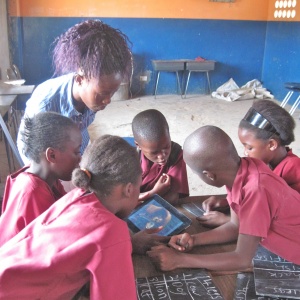OER4Schools/activities/Plan-Teach-Reflect: Difference between revisions
From OER in Education
JanetBlair (talk | contribs) (added text) |
m (Bjoern moved page OER4Schools/activities/Plan teach reflect to OER4Schools/activities/Plan-Teach-Reflect) |
||
| (4 intermediate revisions by 2 users not shown) | |||
| Line 1: | Line 1: | ||
<noinclude>{{OER4SchoolsRinfo | |||
}}</noinclude> | |||
By following this cycle of ongoing reflective practice you will be making the link between theory and practice thus learning from your experience of applying new techniques. Here are the steps: | |||
Part 1: Plan an interactive activity such as brainstorming | * Part 1: Plan an interactive activity such as brainstorming | ||
Part 2: Teach using the activity, bearing in mind the learning objective | * Part 2: Teach using the activity, bearing in mind the learning objective | ||
Part 3: Reflect on how the activity went, first on your own and then with a colleague and perhaps a wider group | * Part 3: Reflect on how the activity went, first on your own and then with a colleague and perhaps a wider group | ||
Revise plan and repeat cycle | |||
Revise plan and repeat cycle. | |||
For reflecting on an activity, it is useful to have questions to guide the reflection. For example, the following questions could be used to guide reflection: | For reflecting on an activity, it is useful to have questions to guide the reflection. For example, the following questions could be used to guide reflection: | ||
What did the children get out of the activity? How can you tell? | * What did the children get out of the activity? How can you tell? | ||
How did you (as the teacher) find out what the children learnt / thought about the activities / got out of them? | * How did you (as the teacher) find out what the children learnt / thought about the activities / got out of them? | ||
What did you (as the teacher) get out of it? | * What did you (as the teacher) get out of it? | ||
Did you find it difficult? | * Did you find it difficult? | ||
What would you do differently next time? | * What would you do differently next time? | ||
Did the activity allow students to meet the learning objective that it was designed to address? | * Did the activity allow students to meet the learning objective that it was designed to address? | ||
Latest revision as of 20:39, 19 December 2012
| Resource details | |
| Title | Plan-Teach-Reflect |
| Topic | |
| Teaching approach | |
| Learning Objectives | |
| Format / structure | |
| Subject | |
| Age of students / grade | |
| Table of contents | |
| Additional Resources/material needed | |
| Useful information | |
| Related ORBIT Wiki Resources | |
| Other (e.g. time frame) | |
| Files and resources to view and download | |
| Acknowledgement | This resource is part of the OER4Schools programme. |
| License | |
By following this cycle of ongoing reflective practice you will be making the link between theory and practice thus learning from your experience of applying new techniques. Here are the steps:
- Part 1: Plan an interactive activity such as brainstorming
- Part 2: Teach using the activity, bearing in mind the learning objective
- Part 3: Reflect on how the activity went, first on your own and then with a colleague and perhaps a wider group
Revise plan and repeat cycle.
For reflecting on an activity, it is useful to have questions to guide the reflection. For example, the following questions could be used to guide reflection:
- What did the children get out of the activity? How can you tell?
- How did you (as the teacher) find out what the children learnt / thought about the activities / got out of them?
- What did you (as the teacher) get out of it?
- Did you find it difficult?
- What would you do differently next time?
- Did the activity allow students to meet the learning objective that it was designed to address?

